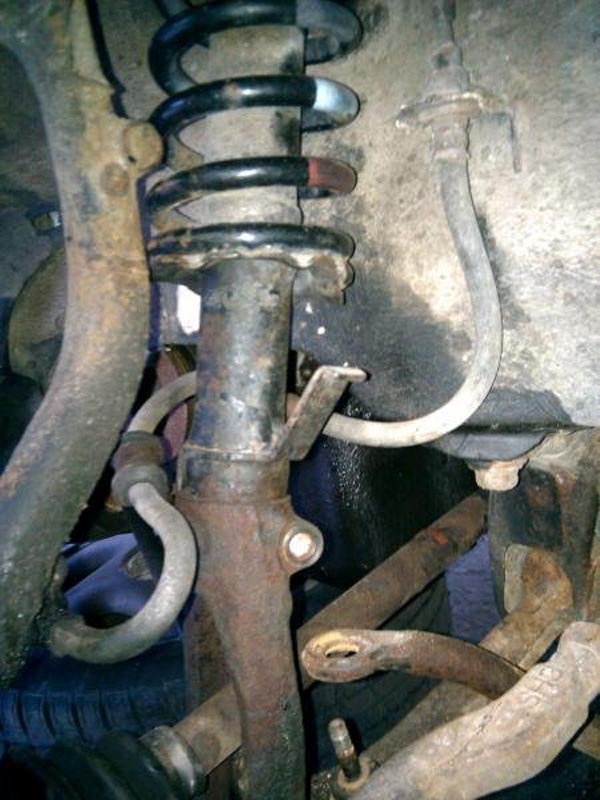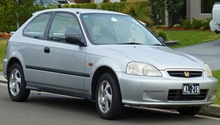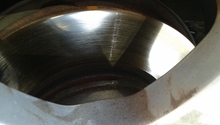Honda Accord: Why is My Suspension Clunking?
A clunking suspension system indicates a variety of mechanical problems in your Honda Accord. If it's not addressed early on, it could lead to costly damages.
This article applies to the Honda Accord (1990-2002).
The comfort of your driving depends mostly on the suspension system being in good condition. But as your Honda Accord rakes in more miles, wear and tear in the suspension system is inevitable. Besides the rougher rides, there are clunking noises beneath the car that indicates a need for repairs or replacements. Those noises are a harbinger to costlier mechanical problems, and if not addressed on time, can result in even more costly accidents. This article will tackle the reasons why your suspension may produce clunking noises, what causes them, and how to address them.
Step 1 – Are the shock absorbers worn out?
If you hear a clunking sound as your car rides over a bump, it's possible the shock absorbers are worn out. If they are not replaced, the efficiency of the steering and brakes will be compromised, which will increase the chances of an accident occurring. If the shock absorbers are okay but the clunk persists, check to see if the bushings are worn out. If they are still in good visible condition, all they may require is some water-proof lubricant like a multipurpose silicone lubricant, which is applied by spraying it on.

Step 2 – Is the strut mount worn out?
Struts are mounted to the car's chassis along with the coiled springs. The springs maintain the car's height, and provide stiffness to the suspension system, which hold the vehicle in place. The shock absorbers dampen the spring movement to ensure a vehicle doesn't react heavily every time it hits a bump. If the strut mounts are worn out, you should also hear a clunking sound. The solution would be to replace them. But if they have just been replaced, it could be that the strut mountings are loose. The slight movement between the bolts and bushings are causing the noise. Try to resolve the problem by tightening them. If a full replacement is necessary, the struts and strut mounts can cost anywhere from $200 to $1,000.

Step 3 – Is the constant velocity (CV) joint worn out?
The CV joint is a component—with bearings and cages—that ensures the torque transmission going to the drive shaft is maintained at a constant rotational speed. When your Accord's CV joint is worn out, you will hear a clunking sound when accelerating and making turns. If the joint is badly worn out, a replacement is necessary as it may disintegrate while you drive. Also, damage to a CV joint boot may allow contaminants to enter the joint and cause it to corrode. If caught early, replacing the boot and applying fresh grease may be a repairable alternative to replacing the entire CV join or drive shaft.

Step 4 – Are the coiled springs worn out?
If wear and tear causes the spring coil of your Honda Accord to break, you will hear a clunking sound from the suspension system. To avoid long term damage to the vehicle, replace the broken springs because they can become entangled with the CV joints or rims. If you notice your Accord leaning to one side without a flat tire, one of the spring coil must be broken.
There are occasions where the coils of the spring compact and hit each other, which will cause the clunking noise. A temporary measure is to put foam tape between the coils, but you should still replace them as soon as you can. The coils are replaced in pairs, and at an auto shop. It may cost you between $200 to $500 for all four springs, depending on where you go.

Step 5 – Are the anti-sway bars worn out?
Anti sway bars/stabilizer bars ensure your car won't roll on those sharp turns. They are designed to keep the car body flat by moving the force from one side to another. If their bushings or end links are worn out, they will rattle or make clunking noises (from the front suspension) when driving at low speeds. The solution is to replace the the bushings or anti-sway bar end links as soon as possible to prevent any major accidents.

Related Discussions and Sites
- Suspension Clunking over Bumps - Honda-Tech.com
- Front Suspension Clunking - Honda-Tech.com
- Front End Knocking Noise - Honda-Tech.com
- Common Causes of Clunking - TheChronicleHerald.ca






